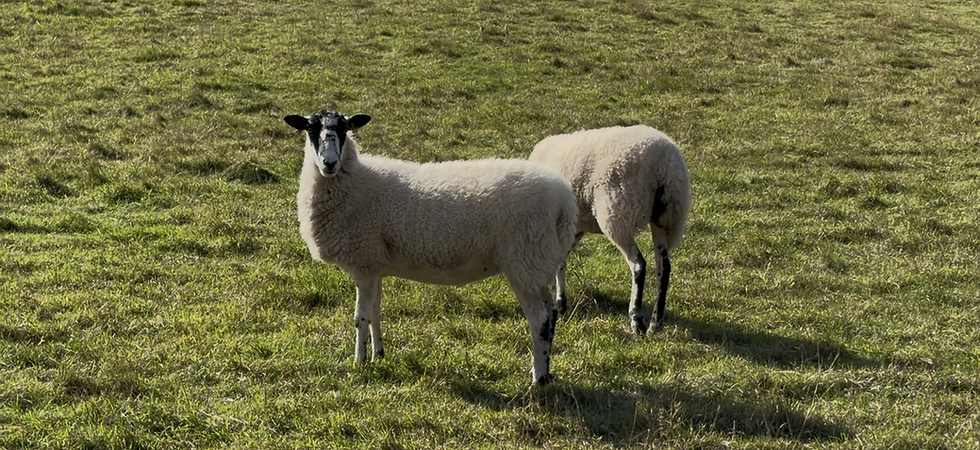SEAL-ETON PT 1
- kradiganscience24
- Jun 20
- 4 min read
Tavishi
This weekend I visited the Marine Mammal Care Center! It's located in San Pedro, and is one of my favorite places in the world. I make art for them (they're currently selling post cards with my art and will soon be releasing Tavishi shirts!), and if I lived in Cali, would probably volunteer with them.

Anyways, while visiting, I got to see lots of cool pinnipeds- namely, Northern elephant seal pups and California sea lions. In the gift store, they have this amazing, huge California sea lion skeleton. I did, in fact, spend like 20 minutes looking at this skeleton alone.
While staring at the skeleton and also making an Anki deck for my dog anatomy today ... (We didn't get super far, but we retained? a lot?)

I was inspired. I'm pretty familiar with pinniped skeletons, but I thought it would be funsies to make a phocid skeleton post... mwahahaha osteology!
First, we begin with context. Phocids, if you haven't figured out through my other previous posts, are true seals. They have a few skeletal differences between sea lions and fur seals, but the biggest visible difference is a lack of external ear flaps, or pinnae. Phocids also are incapable of rotating their hind flippers (which is why they galumph), and are generally rounder than otariids (sea lions and fur seals).

We will go through the skeleton of a phocid in two parts: the axial and appendicular skeleton. The first part of this post will follow the axial skeleton.
First, the axial skeleton is the head, back, and chest. Starting strong with the head, here is a phocid skull and mandible.

I went through the process of roughly labeling parts with highlights. Starting from the nose area, we have... the nasal bone! The nasal bone is highlighted in pink. Phocids have a larger nasal cavity in comparison to us people. The blue that is to the right of the nose is the maxilla, and the turquoise is the frontal bone. Then, the green is the parietal bone, the orange the occipital bone, and the red the temporal bone. The temporal bone makes up part of the zygomatic arch. The hot pink that makes up the other part of the zygomatic arch is the zygomatic bone, which is essentially, the cheek bone. The yellow is the bone that isn't technically part of the skull- the mandible.
Let's read this seal skull in the context of a human skull, as shown below. First, seals have a much more pronounced snout, and definitely a longer maxilla. Humans, in comparison, are brachycephalic to a phocid (flatter in the face. in dog terms, think pug vs german shepherd.) Similarly, their faces are much more round than a human. Y'all should be glad I didn't pull out all the anatomy terms or I'd have to make you an anki. (Chat I'm getting Anki pilled).

Moving on past the skull and jaw, we now go to the hyoid! Now what the hell is the hyoid? Good question! The hyoid bones are definitely some of the least well-known, but also important, bones. In phocids, there are around 11 bones that make up the hyoid, generally referred to as the hyoid apparatus, or the lingual bone. The hyoid is an irregular bone (this is its classification), shaped like a horseshoe with two prominent greater horns and two less prominent lesser horns. Now, the structure of the hyoid differs in species, including how complete it is. The hyoid is made up of basihyals, thyrohyals, keratohyals, epihyals, tympanohyals and stylohals. There is generally only one basihyal, but two of each other kind of bone.

Finally, the vertebrae, ribcage, and sternum.
There are a few types of vertebrae, in order from most cranial to least: cervical, thoracic, lumbar, sacral, and caudal. In humans, our caudal vertebrae are fused to form the coccyx, or the tailbone, because we don't have tails. Seals have a tiny vestigial tail between their flippers, but a tail, nevertheless.
All phocids have seven cervical vertebrae, and around 14 thoracic and around 5 lumbar vertebrae. The cervical vertebrae of pinnipeds are really interesting. In phocids, they remained unfused, in stark contrast to those of cetaceans. In addition, they hold their head close to their chest, allowing them to do this:

Now, the thoracic, lumbar, and cervical vertebrae matter, because they're actually used in locomotion. But the sacral and caudal vertebrae experience ankylosis, or fusion of the bones because like they aren't used. They're almost vestigial in nature if they were to be unfused, because seals on land move like this:
Either way, I labeled a diagram!!! Red for cervical, orange for thoracic, purple for lumbar, blue for sacral, green for caudal.

And finally, the ribs! Ribs are attached either to thoracic vertebrae or the sternum, and thus, are either vertebral or sternal ribs. (Crazy naming scheme there..) In some cetaceans, and I wanna say it's toothed whales, the sternal ribs are cartilaginous. This is utter and complete blasphemy. This post is getting really long, and y'all have no attention span, so I'll cut myself off here after I add one more little tidbit. The ribs in most marine mammals rotate when diving to adjust for thoracic cavity volume because of hydraulic pressure :p




Comments